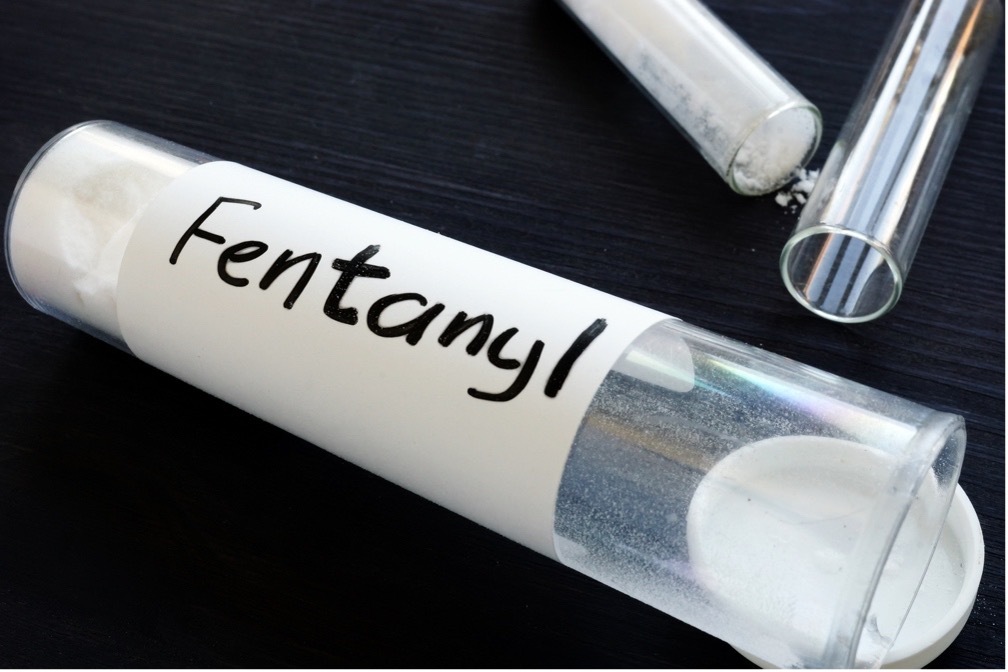Fentanyl overdoses remain a recurring topic in national and local news, with reports surfacing almost daily. According to the California Department of Justice, California witnessed nearly 4,000 fatalities in 2020 due to fentanyl overdoses.
Since 2013, the opioid crisis has been exacerbated by the emergence of illicitly manufactured synthetic opioids, including fentanyl and related compounds. These substances have been linked to a significant rise in overdose deaths. According to estimates, Fentanyl is believed to be 50-100 times more potent than heroin. When combined, the two substances may synergistically affect respiratory depression.
The illicit drug market in the United States has seen the emergence of over a dozen analogs of fentanyl or novel synthetic opioids. This has led to a trend of blending synthetic opioids with other substances or pressing them into counterfeit tablets, creating a high level of unpredictability and uncertainty regarding the consequences of drug use. As a result, there has been an acute increase in fatal overdoses in recent years.
Overview of fentanyl and its effects
Fentanyl is a synthetic opioid analgesic commonly used to treat severe pain, such as in cancer patients or after surgery. While it can be helpful when used correctly, it is also highly addictive and deadly when misused. In recent years, fentanyl has become a significant factor in the opioid epidemic, with an increasing number of overdose deaths attributed to the drug.
Similar to other opioids, fentanyl acts on the brain's opioid receptors. It works by binding to the body’s opioid receptors, blocking pain signals, and producing feelings of euphoria. However, it can also cause dangerous side effects such as respiratory depression, which can result in coma or death.
When fentanyl is abused, it can have serious consequences, including respiratory depression, coma, and death. In recent years, a growing number of overdose deaths have been attributed to fentanyl, often when it is mixed with other drugs like heroin or cocaine.
While fentanyl can be an effective pain medication when used as directed, its potent and addictive nature makes it a dangerous drug that requires careful monitoring and oversight.
The drug can be administered in different forms, including patches, injections, pills, and lozenges. Fentanyl is often added to other substances, such as heroin, cocaine, or counterfeit prescription pills, without the user’s knowledge, making it even more dangerous. It is also available through illicit channels, such as online marketplaces, making tracking difficult.
A recent development in illicit drugs is the emergence of "Rainbow fentanyl,” which made a big arrival this past Halloween. This involves mixing fentanyl with dyes, producing brightly colored pills or powders of various hues. Drug traffickers may use these dyes to evade detection and target teenagers and young adults. Despite claims to the contrary, laboratory testing has failed to provide evidence supporting the notion that specific colors are more potent than others.
The prevalence of fentanyl abuse in the US
Fentanyl and its analogs, synthetic opioids, are commonly produced in laboratories and often originate from China. These substances are then illicitly transported into the United States through various channels, such as the mail and express consignment systems, and through the southern and northern borders. Utilizing the dark web and virtual cryptocurrencies has created a relatively anonymous environment where individuals and small, independent criminal networks can sell and purchase drugs.
Heroin dealers have been found to mix synthetic opioids with their products, as well as other illegal substances such as cocaine, methamphetamine, counterfeit prescription analgesics, and benzodiazepines, which increases the likelihood of opioid overdose for individuals who may not even be aware they are consuming opioids. One of the crucial inquiries pertains to the extent to which drug users deliberately seek out fentanyl as opposed to its covert addition to the drug market.
According to a recent study conducted in New Hampshire, a quarter of opioid users actively sought out fentanyl or heroin laced with fentanyl. In contrast, a significant number of other users expressed a preference for either heroin or a particular prescription opioid. According to evidence, fentanyl has been introduced into the drug supply due to supply-driven factors. This includes the augmentation of heroin and prescription opioids with fentanyl, which can be costly or difficult to obtain in a multifaceted drug market.
The public health community must remain vigilant to market developments as synthetic opioids have rapidly overtaken heroin and prescription-type opioids with devastating effects. According to the most recent data released by the U.S. Drug Enforcement Administration (DEA), there has been a notable increase and westward migration of fentanyl and its analogs. However, it remains to be seen whether synthetic opioids will completely replace other opioids in the illegal markets in the coming years.
Anne Milgram, head of the DEA, claims that fentanyl is killing Americans at an alarming pace. At least seven American cities have had mass overdose events in recent months, defined as three or more overdoses happening simultaneously and at the same site. When drug traffickers sell their product as "cocaine" when it really includes fentanyl, or when narcotics dealers distribute pills that seem very similar to actual prescriptions but are fakes containing fentanyl, these mass overdose events often occur.
The DEA is prepared to provide any assistance necessary to law enforcement associates, including interdicting the substance causing the increase in overdoses, conducting an investigation to find the sellers and larger criminal syndicates responsible for the overdose event, giving law enforcement partners priority access to all of the DEA's resources, helping to present the case to federal prosecutor's offices, and warning the public about the dangerous drug threat.
The DEA seized almost 15,000 pounds of fentanyl last year, more than enough to kill every person in the United States. This alert is an extension of the DEA's Public Safety Alert from September 2021, which warned about the proliferation of counterfeit fentanyl-containing prescription tablets. The DEA investigates potential links between increased domestic fentanyl availability and mass overdose events perpetrated by local and international drug trafficking groups and cartels.
Warning signs of fentanyl abuse
Fentanyl abuse is a severe public health crisis in the United States, and it's essential to recognize the warning signs so that individuals can seek help. Here are some common warning signs of fentanyl abuse:
1. Pinpoint pupils
2. Nausea and vomiting
3. Drowsiness and confusion
4. Slowed or shallow breathing
5. Constipation
6. Itching and scratching
7. Mood swings and irritability
8. Financial problems due to excessive spending on drugs
What to do if you suspect a fentanyl overdose
If you feel someone has overdosed on fentanyl, do the following:
- Quickly dial 911. (Most jurisdictions have provisions that may shield either the person overdosing or the person who phoned for assistance from legal action.)
- If you have the potentially lifesaving drug naloxone, give it to the person immediately.
- Make sure the individual is still conscious and breathing.
- Keep them on their side if you're worried about them choking.
- Wait with them until the ambulance arrives.
Prevention strategies for avoiding fentanyl abuse
One approach to preventing fentanyl abuse is education and awareness campaigns targeting high-risk populations. This includes individuals with a history of substance abuse, chronic pain patients, and healthcare professionals who prescribe opioids.
The availability of naloxone, a medication used to reverse the effects of an opioid overdose, is also an important prevention strategy. Naloxone can be administered by first responders, healthcare professionals, or even family and friends of individuals at risk of overdose.
Access to substance abuse treatment and recovery services like an intense outpatient program or luxury rehab is critical in preventing fentanyl abuse. This includes medication-assisted treatment, counseling, and support groups.
Available resources for those struggling with fentanyl abuse and addiction
Fentanyl abuse and addiction can be incredibly challenging to overcome, but resources are available to those who need help. To combat the rise in fentanyl abuse, several steps are being taken. The National Fentanyl Awareness Day website provides information and resources for individuals and communities to raise awareness about the dangers of fentanyl. The Substance Abuse and Mental Health Services Administration (SAMHSA) offers a National Helpline and resources for locating opioid treatment programs and Buprenorphine practitioners.
Additionally, naloxone is a medicine that rapidly reverses opioid overdose and can save lives in an emergency. The National Institute on Drug Abuse (NIDA) provides various resources for healthcare professionals on overdose prevention and treatment. Additionally, prescription drug monitoring programs and access to naloxone can help prevent fentanyl overdose. Substance abuse treatment and recovery services are also available to those struggling with addiction. It's essential to seek help from a qualified health professional to receive personalized medical advice and care.
Wish Recovery is a luxury drug rehab that offers comprehensive treatment for addictions to many substances and alcohol. Contact us today to learn more about our programs and our role in the awareness and prevention of drug misuse and substance use disorders.


